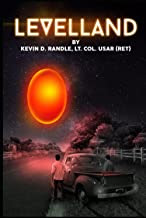To understand Drake’s equation and understand it’s impact, we need to take a look at it. Written out, it looks like this:
N = The number of communicative civilizations.
R* = The rate of formation of suitable stars ( such as our Sun)
fp = The fraction of those stars with planets. (Current evidence indicates that planetary systems may be common for stars like the Sun. In fact, planetary systems have been found where astronomers had once believed that they couldn’t.)
ne = The number of Earth-like worlds per planetary system
fl = The fraction of those Earth-like planets where life actually develops
fi = The fraction of those planets on which life develops where intelligence develops
fc = The fraction of communicative planets (those on which communications technology develops that might be something like radio, or something that involves light)
L = The "lifetime" of communicating civilizations
 ave an industrial civilization that is sufficiently advanced that it could, theoretically communicate with it’s neighbors (An artisits conception of an extrasolar planet courtesy of NASA). Earth would be an example of this.
ave an industrial civilization that is sufficiently advanced that it could, theoretically communicate with it’s neighbors (An artisits conception of an extrasolar planet courtesy of NASA). Earth would be an example of this.When Drake first developed his equation, we didn’t know of any planets but the nine in our Solar System (yes, I said nine because in 1960, that was the accepted fact. Now we have eight planets and three dwarf planets, but that doesn’t change the fact that in 1960, Drake only knew of the planets circling our sun). Any attempt to assign a number to the fraction of stars with planets was speculative. I think most believed that most other stars had planetary systems, but the truth is, in 1960, we didn’t know.
Even today, we don’t know of any "real" Earth-like planets among the many extrasolar planets that have been discovered. We might say that most systems would are made up of gas giants that are many times larger than Jupiter. Of course, as scientists refine the process, smaller worlds are being found.
Now comes word of another important discovery that helps polish the Drake Equation. Astronomers believe they had detected water in the atmosphere of one of those extasolar planets. Scientists have believed that many of these huge worlds have water, but this is the first time that it has been detected, according to a report in an upcoming issue of Astrophysical Journal.
HD209458b (which is the planet’s name and that reminds me of the "namebers in Ira Levin’s This Perfect Day) is the first world to be directly observed orbiting a normal star outside the Solar System. It is the first extrasolar planet where oxygen and carbon have been detected in its atmosphere. And now water has been discovered.
Of course, it’s not an Earth-like world. It is only about four million miles from its sun and is so hot that astronomers believe it’s losing about 10,000 tons of material every second as vented gas.
So, HD209458b is not a good candidate for any kind of life, or maybe I should say, any life as we know it. There are creatures on Earth that live in some very extreme climates that would boil or fry most species.
But the point here is that we have been able to understand a little more about the galaxy around us and we have been able to define the terms in the Drake Equation with a little more precision.
This means that the likelihood that other worlds like Earth exist has increased, and that the elements that they we believe are necessary for life exist on, at the very least, one planet outside our Solar System. If that it true, then it becomes more likely that life exists outside of our Solar System and that some of that life would have evolved into intelligence and some of those intelligent creatures evolved before we did. Their advanced civilizations might have been able to solve the problem of interstellar flight and have discovered us.
In other words, this discovery has increased the chances that some UFOs are intelligently controlled vehicles from another world.






















No comments:
Post a Comment